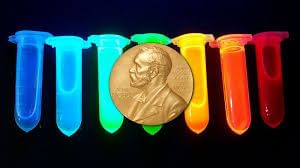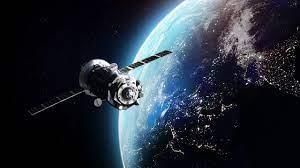Science & Technology - 4 | Current Affairs & Hindu Analysis: Daily, Weekly & Monthly - UPSC PDF Download
| Table of contents |

|
| Nobel Prize In Physics 2023 |

|
| Nobel Prize in Chemistry 2023 |

|
| Nobel Prize In Physiology or Medicine 2023 |

|
| Net Neutrality |

|
| Unlocking India’s Spacetech Potential |

|
Nobel Prize In Physics 2023
The 2023 Nobel Prize in Physics has been bestowed upon three eminent scientists: Pierre Agostini, Ferenc Krausz, and Anne L’Huillier.
- Their pioneering contributions to experimental physics have resulted in the creation of attosecond pulses, providing scientists with the capability to directly witness and analyze the swift dynamics of electrons within various materials.
What Constitutes Electron Dynamics?
- Electron dynamics involves the exploration and comprehension of the actions and mobility of electrons within atoms, molecules, and solid materials. This encompasses diverse facets of electron behavior, such as their motion, interactions with electromagnetic fields, and reactions to external forces.
- Electrons, characterized as fundamental particles with a negative charge, orbit the dense nucleus. Traditionally, scientists had to rely on indirect methods to decipher electron behavior, akin to capturing a fast-moving race car through a photograph with a prolonged exposure time, resulting in a blurred image. The rapid movement of electrons made them nearly imperceptible through conventional measurement techniques.
- In molecules, atoms exhibit movements occurring within femtoseconds, extremely brief time intervals constituting a millionth of a billionth of a second. Electrons, being lighter and interacting at an even swifter pace, operate within the attosecond realm—a billionth of a billionth of a second (1×10^−18 of a second).
Note: An attosecond pulse denotes an exceedingly brief burst of light lasting for attoseconds.
How did Scientists Achieve Attosecond Pulse Generation?
Background:
- In the 1980s, physicists managed to create light pulses lasting just a few femtoseconds.
- At that time, it was believed that this was the shortest achievable duration for light pulses.
- However, to 'see' electrons in action, an even shorter pulse was needed.
Advancements in Attosecond Pulse Generation:
- In 1987, Anne L’Huillier and her team at a French laboratory achieved a significant breakthrough.
- They passed an infrared laser beam through a noble gas, leading to the generation of overtones—waves of light with wavelengths that were integer fractions of the original beam.
- The overtones generated in the gas were in the form of ultraviolet light. Scientists observed that when multiple overtones interacted, they could either intensify each other through constructive interference or cancel each other out through destructive interference.
- By refining their setup, physicists managed to create intense attosecond pulses of light.
- In 2001, Pierre Agostini and his research group in France successfully produced a series of 250-attosecond light pulses.
- By combining this pulse train with the original beam, they conducted rapid experiments that offered unprecedented insights into electron dynamics.
- Simultaneously, Ferenc Krausz and his team in Austria developed a technique to isolate individual 650-attosecond pulses from a pulse train.
- This breakthrough allowed researchers to measure the energy of electrons released by krypton atoms with remarkable precision.
Applications of Attosecond Physics
Investigating Transient Processes:
- Attosecond pulses empower scientists to capture 'snapshots' of ultrafast atomic and molecular processes. This has profound implications in fields such as materials science, electronics, and catalysis, where comprehending swift changes is paramount.
Medical Diagnostic Advancements:
- The utilization of attosecond pulses in medical diagnostics holds the potential to identify specific molecules based on their fleeting signatures. This promises advancements in medical imaging and diagnostic techniques.
Advancement in Electronics:
- Attosecond physics has the potential to contribute to the development of faster electronic devices, pushing the frontiers of computing and telecommunications technology.
Enhanced Imaging and Spectroscopy:
- Manipulating attosecond pulses opens avenues for higher-resolution imaging and spectroscopy. This innovation finds applications across diverse fields, from biology to astronomy, offering improved insights and analyses.
Nobel Prize in Chemistry 2023
The Nobel Prize in Chemistry 2023 has been conferred upon Moungi G Bawendi, Louis E Brus, and Alexei I Ekimov by the Royal Swedish Academy of Sciences. They are recognized for their pioneering discovery and synthesis of quantum dots.
How Scientists Uncovered Quantum Dots:
Background:
- Traditionally, all pieces of a pure element, irrespective of size, were assumed to share identical properties due to the even distribution of electrons. However, approximately forty years ago, the discovery of distinct behaviors in nanoparticles on the nanoscale, typically 1 to 100 billionths of a meter in size, challenged this conventional belief.
Contributions of Nobel Laureates:
Alexei Ekimov:
- Around 1980, Alexei Ekimov became the first to observe anomalous behavior in Copper Chloride nanoparticles.
- He successfully manufactured these nanoparticles, highlighting their unique properties.
Louis Brus:
- American scientist Louis Brus made a parallel discovery involving Cadmium Sulphide nanoparticles.
- Like Ekimov, he could engineer these nanoparticles with altered properties.
Moungi Bawendi:
- Initially collaborating with Louis Brus, Moungi Bawendi later played a crucial role in streamlining production methods for nanoparticles with distinctive characteristics.
- His efforts facilitated efficient and controlled manufacturing of nanoparticles displaying desired deviant behaviors.
Factor Behind Distinctive Nanoparticle Properties:
- The atypical behavior of small nanoparticles arises from the emergence of quantum effects. Despite being considerably larger than individual atoms, a pivotal insight from the 1930s revealed that when particles are reduced to the nanoscale, quantum effects can come into play. This is because, under such conditions, electrons within atoms find themselves confined within a limited space.
- While electrons typically move within a relatively expansive area outside the nucleus of an atom, diminishing particle size leads to increased constraints, resulting in the manifestation of these distinctive quantum effects. This profound understanding, demonstrated by Nobel Laureates Ekimov and Brus, led to the creation of nano-sized particles with behaviors distinct from their larger counterparts of the same element.
Quantum Dots Feature:
- Quantum dots, nano-sized particles typically ranging from 1 to 100 nanometers, possess unique properties dictated by their size.
- Notably, the size of quantum dots determines the color of light they emit, with smaller dots emitting blue light and larger ones emitting yellow and red light.
What can be the Applications of Quantum Dots?
- Display Technology: Quantum dots can enhance the quality of displays, such as LED lamps and television screens, by emitting clear and vibrant light.
- Medical Imaging: They can illuminate tumor tissue during surgery, aiding surgeons in precise removal.
- Their nanoscale size makes them ideal for use in tiny sensors.
- Flexible Electronics: Quantum dots hold promise for flexible electronics, paving the way for innovative and adaptable devices..
- Slimmer Solar Cells: Quantum dots could lead to more efficient and compact solar cells, improving renewable energy solutions.
- Encrypted Quantum Communication: Quantum dots might play a role in developing secure quantum communication technologies, protecting sensitive information.
Nobel Prize In Physiology or Medicine 2023
The Nobel Prize in Medicine or Physiology for the year 2023 has been granted to Katalin Karikó and Drew Weissman in recognition of their groundbreaking contributions to the modification of nucleoside bases in messenger Ribonucleic Acid (mRNA).
- The pivotal discoveries made by these two Nobel Laureates played a crucial role in the development of highly effective mRNA vaccines against Covid-19 during the global pandemic that commenced in early 2020.
What Katalin Karikó and Drew Weissman Uncovered
Addressing the Challenge:
- Cells inherently possess the ability to identify foreign substances. Dendritic cells, integral to our immune system, demonstrated the capacity to perceive in vitro transcribed mRNA as foreign, initiating an inflammatory response.
- This response had the potential to induce adverse side effects and compromise the effectiveness of the vaccine. Additionally, another obstacle arose from the inherent instability of in vitro transcribed mRNA, making it highly vulnerable to degradation by enzymes within the body.
Katalin Karikó and Drew Weissman’s Discovery:
- Karikó and Weissman observed that dendritic cells identify in vitro transcribed mRNA as foreign, activating them and causing the release of inflammatory signals.
- They questioned why this mRNA was considered foreign, unlike mRNA from mammalian cells, which didn't trigger the same response.
- Mammalian cells are eukaryotic cells that belong to the animal kingdom and have a nucleus and other membrane-bound organelles.
- This led them to realize that there must be distinct properties separating the two mRNA types.
The Breakthrough:
- RNA, like Deoxyribonucleic acid (DNA), consists of four bases: A, U, G, and C. Karikó and Weissman noticed that natural RNA from mammalian cells often had chemical modifications in its bases.
- They hypothesized that the absence of these modifications in lab-made mRNA might cause inflammatory reactions.
- To test this, they created various mRNA variants with unique chemical alterations and delivered them to dendritic cells. Their results showed a significant reduction in inflammatory responses when base modifications were included in the mRNA.
- This discovery transformed our understanding of how cells recognize and respond to different types of mRNA, with profound implications for mRNA's therapeutic potential.
- Their subsequent studies in 2008 and 2010 demonstrated that mRNA with base modifications led to increased protein production.
- This effect was attributed to the reduced activation of an enzyme involved in protein production.
- Karikó and Weissman's research removed critical obstacles, making mRNA more suitable for clinical applications.
Application of mRNA Vaccines with Base Modifications
Surge in mRNA Technology Interest:
- Interest in mRNA technology surged, with several companies actively exploring its applications by 2010. Initially pursued for vaccines against diseases like the Zika virus, closely related to SARS-CoV-2.
Response to the Covid-19 Pandemic:
- With the advent of the Covid-19 pandemic, base-modified mRNA vaccines encoding the SARS-CoV-2 surface protein were rapidly developed, showcasing unprecedented speed. These vaccines exhibited protective efficacy of around 95%, receiving approval as early as December 2020.
Versatility and Speed of mRNA Vaccine Development:
- The exceptional flexibility and swiftness demonstrated in developing mRNA vaccines opened possibilities for potential use against other infectious diseases. More than 13 billion Covid-19 vaccine doses have been collectively administered worldwide, saving millions of lives and preventing severe illness.
Nobel Laureates' Impact During Health Crisis:
- This transformative development amid a major health crisis underscores the pivotal role played by this year's Nobel laureates in recognizing the significance of base modifications in mRNA.
Understanding mRNA Vaccines and their Mechanism:
- mRNA, or messenger RNA, serves as a molecule carrying genetic information from DNA to the cell's protein-making machinery. mRNA vaccines utilize synthetic mRNA that encodes a specific protein from a pathogen, such as the spike protein of the coronavirus.
- Upon injection into the body, some cells take up the mRNA, using it to produce the protein. This protein triggers an immune response, generating antibodies and memory cells capable of recognizing and combating the pathogen in the future.
- mRNA vaccines boast faster and more cost-effective production as they eliminate the need for cell culture or intricate purification processes. Their adaptability is a key advantage, as they can be easily modified to target new variants or strains of pathogens.
Net Neutrality
The Cellular Operators Association of India (COAI), representing major telecom operators in India—Bharti Airtel, Vodafone Idea, and Reliance Jio—has been advocating for platforms like YouTube and WhatsApp to contribute a share of revenue to offset network costs. This has sparked renewed discussions on the topic of net neutrality.
Arguments and Recent Developments
- Telecom operators are urging compensation for the substantial usage on their networks, a demand echoed by telecom operators in the European Union who seek similar usage fees from content providers. In response, content providers contend that imposing such fees, even on a limited number of prominent players, would distort the internet's fundamental architecture.
- In 2016, the Telecom Regulatory Authority of India (TRAI) ruled in favor of net neutrality. Subsequently, in 2018, the Department of Telecommunications incorporated the net neutrality concept into the Unified License, binding all telecom operators and internet providers to its conditions.
Who are the Different Stakeholders in the Internet Space?
- The stakeholders in the internet space are:
- The consumers of any internet service
- The Telecom Service Providers (TSPs) or Internet Service Providers (ISPs),
- The Over-the-top (OTT) service providers (those who provide internet access services such as websites and applications),
- The government, who may regulate and define relationships between these players.
- Also, TRAI is an independent regulator in the telecom sector, which mainly regulates TSPs and their licensing conditions, etc.
How is Net Neutrality Regulated?
- Until now, net neutrality has not directly been regulated in India by any law or policy framework.
- Over the last year, there have been some developments with respect to the formulation of a net neutrality policy.
- TRAI is working on Differential Pricing for Data Services as well as Regulatory Framework for Over-The-Top Services (OTT).
- A Committee set up by the Department of Telecommunications (DoT) has also examined the issue of net neutrality.
- Also, Internationally, countries like the USA, Japan, Brazil, Chile, Norway, etc. have some form of law, order or regulatory framework in place that affects net neutrality.
Unlocking India’s Spacetech Potential
This piece is derived from the report titled "India’s space economy to soar to $40 billion by 2040: Union Minister," as featured in Live Mint. Deloitte consultancy reveals a substantial surge in private investments within the space sector, experiencing a remarkable 77 percent increase between 2021 and 2022. The noteworthy growth is attributed to the emergence of 190 Indian space start-ups, which is twice the number recorded in the preceding year.
Current Status of India's SpaceTech Sector
- As of 2023, the Indian SpaceTech sector has attracted $62 million in funding, marking a 60% increase from the corresponding period last year, as reported by data research firm Tracxn. Notable companies like Skyroot have propelled India into the private space domain, launching the country's first privately built rocket, Vikram-S, with plans to revolutionize satellite launches.
- The Indian Space Policy 2023 has formalized regulations for the privatization of space missions, outlining clear guidelines for NewSpace India Limited (NSIL) — ISRO's commercial arm — and the Indian National Space Promotion and Authorization Centre (IN-SPACe). This move empowers private startups to offer various space services, including satellite communication, mission control centers, satellite deployment, and even engagement in the commercial recovery of space resources.
Potential of India’s Space Sector
- Space Economy: Currently valued at ₹6,700 crore ($8.4 billion), India's space economy holds a 2% share in the global space economy.
- Revenue from Satellite Launch: Revenue from launching European satellites stands at EUR 230-240 million, while launches for American satellites generate around $170-180 million.
- Future Prospect: IN-SPACe projects that India's space economy could reach ₹35,200 crore ($44 billion) by 2033, constituting about 8% of the global share.
- Export Share: Presently, the domestic market share is ₹6,400 crore ($8.1 billion), with an export market share of ₹2,400 crore ($0.3 billion).
Status of Privatization of Space Sector:
- As per SpaceTech Analytics, India ranks as the sixth-largest player globally, hosting 3.6% of the world's space-tech companies (as of 2021). The U.S. leads with 56.4% of all space-tech companies, followed by the U.K. (6.5%), Canada (5.3%), China (4.7%), and Germany (4.1%).
- Rise of Spacetech Startups: Indian spacetech startups, such as Skyroot Aerospace, Agnikul Cosmos, and Bellatrix Aerospace, have significantly contributed to the industry. Skyroot Aerospace launched Vikram-S, the first privately developed rocket, and Agnikul Cosmos set up India's initial launch pad at the Satish Dhawan Space Centre.
India Allows Private Participation:
- FDI Enhancement: Encouraging private participation will serve as a key driver for attracting more foreign direct investment in space startups and related technology companies in India. Currently, FDI is permitted up to 100% in satellite establishment and operations, albeit through the Government route.
- Realizing 'Make in India': Aligning with the vision of "Make in India" and "Aatmanirbhar Bharat," increased private sector involvement aims to reshape the predominantly government-led space sector.
- Policy Framework and Goals: The Indian Space Policy 2023 envisions private sector participation to elevate India's global space economy share from 2% to 9% by 2030.
- Socio-Economic Impact: Private sector empowerment enhances the socio-economic impact of space applications, offering innovative solutions in agriculture, disaster management, and communication. Companies like Pixxel, Dhruva Space, and Bellatrix Aerospace contribute to this impact.
Emerging Opportunities in the Global Space Sector:
Future opportunities in areas like space tourism and commercial space resource recovery present significant growth prospects for the sector.
ISRO’s Focus on Core Competencies:
- Encouraging private participation can enable ISRO to concentrate on core competencies such as scientific research, development, interplanetary exploration, and strategic launches, leveraging the strengths of small and medium-sized enterprises in the supply chain.
Impact of Reforms
Accelerated Innovation and Technology Development:
- The entry of private players is anticipated to inject fresh perspectives, innovation, and a competitive spirit into the space sector, fostering the development of cutting-edge technologies and solutions.
Enhanced Access to Space Technologies:
- Increased private participation is set to make space technologies more accessible to a broader spectrum of users, including government agencies, industries, and startups. This, in turn, is expected to drive the adoption of space-based solutions across various sectors.
PSLV Productionisation:
- A significant breakthrough in commercialization is the productionization of Polar Satellite Launch Vehicle (PSLV) through Industry collaboration. An Memorandum of Understanding (MOU) between NSIL and HAL for the production of 5 PSLVs exemplifies this initiative, with L&T partnering in the consortium.
Transfer of Technology:
- Various non-disclosure agreements and MOUs for the transfer of technologies have been established between ISRO centers and several private sector companies. Additionally, ISRO's Small Satellite Launch Vehicle (SSLV) development aims to capture the small satellite launching market, with technology transfer planned to follow successful qualification.
Investment in Space Sector:
- Ranked 7th globally in terms of funding, the Indian space startup sector has witnessed substantial growth, with funding increasing from Rs 28 million in 2020 to Rs 112 million in 2022. Contributing factors include the rising demand for space-based solutions, cost-effective satellite manufacturing, reduced launch costs, and advancements in supporting technologies like AI and 3D printing. The IFSCA's MoU with DoS further emphasizes the push for international investments in the space sector.
Human Resource Development:
- Collaborative efforts between ISRO and the Ministry of Skill Development & Entrepreneurship (MSDE) have led to a skill development program in the space domain. Training programs at National Skill Training Institutes (NSTI) have been instrumental in upskilling 40 young professionals and 100 ISRO staff, with plans to continue monthly courses for ISRO staff. A Leadership Training Programme has also been initiated for 32 scientists from 8 science ministries in association with CBC, STI-CB cell, PSA’s office, and ISRO.
Centre’s Efforts in Privatisation of Space Sector
Indian Space Policy, 2023:
- The policy provides clarity on the role of private sector participants, removing barriers to their entry into the sector.
IN-SPACe:
- As a single-window, independent nodal agency, IN-SPACe, functioning under the Department of Space (DOS), facilitates the participation of private players in space activities.
New Space India Limited (NSIL):
- Incorporated in 2019 under DOS, NSIL, as a wholly-owned Government of India Undertaking, commercially exploits ISRO's research and development work.
Space Remote Sensing Policy of India – 2020:
- This policy aims to motivate stakeholders to actively engage in space-based remote sensing operations, promoting commercialization.
Government-Owned, Company-Operated (GOCO) System:
- ISRO's move towards privatization involves opening RF systems and electromagnetic actuator manufacturing to private players through a GOCO system.
Challenges:
Access to Capital:
- Despite the profitability of space-based enterprises, access to private capital remains challenging. Regulatory clearances and political stability issues can cause delays and hurdles in investor decision-making.
Access to Insurance:
- A lack of adequate and secure insurance is noted due to insurers' reluctance to assess the reliability of space-based technologies.
Ability to Create Self-Sustaining Markets:
- The historical inability to forge self-sustaining commercial markets raises questions about the commercial viability of space-based enterprises.
Antrix-Devas Case:
- The Antrix-Devas case highlights contractual complexities, with allegations of impropriety leading to contract termination. The subsequent legal proceedings underscore challenges in contractual enforcement.
Pros and Cons of Privatizing Space Exploration:
Pros:
- Reduced Exploration Cost: Private companies like SpaceX and Blue Origin have revolutionized space exploration by lowering costs and turnaround times through innovation and advanced technology.
- Tourism: Companies like Blue Origin are exploring space tourism, offering trips beyond Earth's atmosphere.
- Natural Resources: Legal frameworks, such as Luxembourg's, secure private rights over resources mined in space, offering opportunities for resource extraction.
Cons:
- Regulation: While profitable, regulating private sector participation is complex, with delays and hurdles arising from regulatory clearances and unstable political institutions.
- Spacecraft Emissions: The surge in private sector launches contributes to spacecraft emissions, impacting the global climate.
- Orbital Debris: Increased satellite constellations and launches lead to more collisions, posing threats from orbital debris.
Way Forward
- Enable and Promote Non-Governmental Entities (NGE): Encourage independent space activities by providing a level playing field and a favorable regulatory environment for private players in the Indian sector.
- Open Up ISRO Infrastructure and Facilities: Make national space infrastructure accessible to the private industry through a business-friendly mechanism, allowing them to use facilities for testing, tracking, telemetry, launch pads, and laboratories.
- Demand-Driven Approach for Space Assets: Optimize space asset utilization by holding various stakeholders accountable and ensuring new asset creation aligns with confirmed demand from user agencies.
- Upskilling the Human Power: Conduct skill development programs, such as ISRO Technical Training Programme (ITTP), to upskill and reskill technicians and scientific assistants in collaboration with the Ministry of Skill Development & Entrepreneurship.
Conclusion
Armed with a strong regulatory foundation, additional initiatives fostering a business-friendly environment for space technology enterprises, and avenues for private sector investment, India's space sector stands poised to emerge as a pioneer in the international space market.
|
44 videos|5271 docs|1113 tests
|
FAQs on Science & Technology - 4 - Current Affairs & Hindu Analysis: Daily, Weekly & Monthly - UPSC
| 1. What is the Nobel Prize in Physics and how is it awarded? |  |
| 2. What is the significance of the Nobel Prize in Chemistry? |  |
| 3. How is the Nobel Prize in Physiology or Medicine awarded? |  |
| 4. What is net neutrality and why is it important? |  |
| 5. How can India unlock its spacetech potential? |  |



















